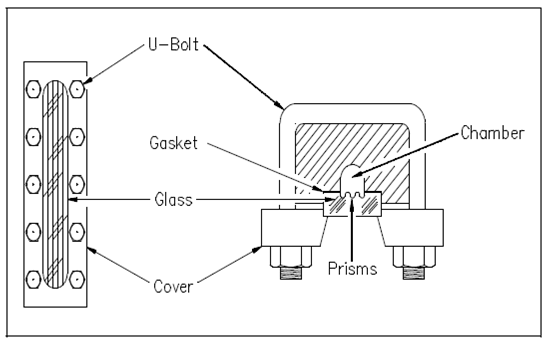Reflex Gauge Glass:
Another category of gauge glass is the reflex gauge glass that was display in the below figure. In that type, one side of the glass section is prism-shaped. The glass is molded like in which one side has 90-degree angles that run lengthwise. A Light rays strike the outer surface of the glass at a 90-degree angle. The light rays travel by the glass striking the inner side of the glass at a 45-degree angle. A presence or absence of liquid in the chamber determines if the light rays are refracted into the chamber or reflected back to the outer surface of the glass.

Figure: Reflex Gauge Glass
While the liquid is at an intermediate level in the gauge glass then the light rays encounter an air-glass interface in one portion of the chamber and a water-glass interface within the other portion of the chamber. Where an air-glass interface exists and the light rays are reflected back to the outer surface of the glass because the critical angle for light to pass from air to glass is 42 degrees. That will cause the gauge glass to appear silvery-white. Within the portion of the chamber with the water-glass interface a light is refracted into the chamber through the prisms. Reflection of the light back to the outer surface of the gauge glass does not occur since the critical angle for light to pass from glass to water is 62-degrees. That results inside the glass appearing black, because it is possible to see by the water to the walls of the chamber that are painted black.